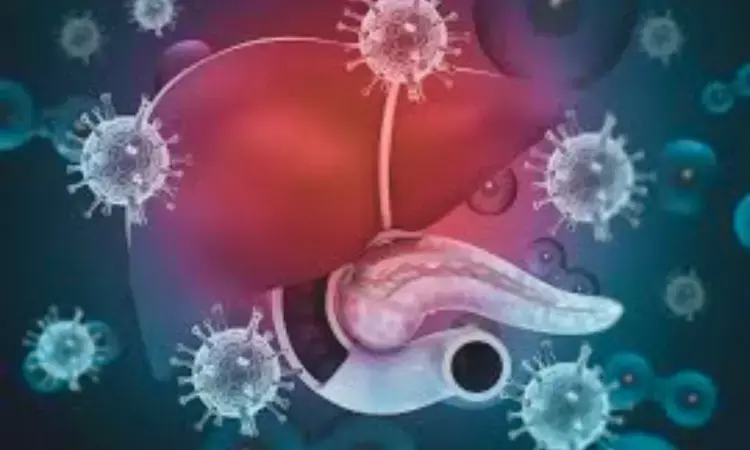- Home
- Medical news & Guidelines
- Anesthesiology
- Cardiology and CTVS
- Critical Care
- Dentistry
- Dermatology
- Diabetes and Endocrinology
- ENT
- Gastroenterology
- Medicine
- Nephrology
- Neurology
- Obstretics-Gynaecology
- Oncology
- Ophthalmology
- Orthopaedics
- Pediatrics-Neonatology
- Psychiatry
- Pulmonology
- Radiology
- Surgery
- Urology
- Laboratory Medicine
- Diet
- Nursing
- Paramedical
- Physiotherapy
- Health news
- Fact Check
- Bone Health Fact Check
- Brain Health Fact Check
- Cancer Related Fact Check
- Child Care Fact Check
- Dental and oral health fact check
- Diabetes and metabolic health fact check
- Diet and Nutrition Fact Check
- Eye and ENT Care Fact Check
- Fitness fact check
- Gut health fact check
- Heart health fact check
- Kidney health fact check
- Medical education fact check
- Men's health fact check
- Respiratory fact check
- Skin and hair care fact check
- Vaccine and Immunization fact check
- Women's health fact check
- AYUSH
- State News
- Andaman and Nicobar Islands
- Andhra Pradesh
- Arunachal Pradesh
- Assam
- Bihar
- Chandigarh
- Chattisgarh
- Dadra and Nagar Haveli
- Daman and Diu
- Delhi
- Goa
- Gujarat
- Haryana
- Himachal Pradesh
- Jammu & Kashmir
- Jharkhand
- Karnataka
- Kerala
- Ladakh
- Lakshadweep
- Madhya Pradesh
- Maharashtra
- Manipur
- Meghalaya
- Mizoram
- Nagaland
- Odisha
- Puducherry
- Punjab
- Rajasthan
- Sikkim
- Tamil Nadu
- Telangana
- Tripura
- Uttar Pradesh
- Uttrakhand
- West Bengal
- Medical Education
- Industry
Severe Alcohol-Associated Hepatitis Still Carries High Short-Term Mortality, Meta-Analysis Finds

USA: Short-term mortality among patients with severe alcohol-associated hepatitis (sAH) remains alarmingly high despite decades of clinical advances, a recent meta-analysis published in Alimentary Pharmacology & Therapeutics has shown.
The analysis, led by Dr. Mushfiqur R. Siddique and colleagues from the Department of Internal Medicine at Jamaica Hospital Medical Center, New York, highlights that survival rates have shown little meaningful improvement over the past 50 years. The authors call for urgent action to develop more effective treatments, refine patient selection for early liver transplantation, and strengthen strategies to prevent this life-threatening condition.
The review pooled data from 34 investigations involving 1,586 patients diagnosed with sAH. By examining mortality at 28, 60, and 90 days after diagnosis, the team sought to chart trends in outcomes over five decades. Advanced statistical approaches—including random-effects meta-regression and Bayesian mixed-effects models—were applied to identify mortality patterns and potential risk factors while accounting for differences across studies.
Key Findings:
- Pooled mortality estimates were 26.8% at 28 days, 35.1% at 60 days, and 43.7% at 90 days, showing that the risk of death rises steadily during the first three months after presentation.
- An initial decline in 28-day mortality was observed, dropping from over 50% in the 1970s to about 25% after 2000, but decade-by-decade analysis showed no statistically credible improvement in survival over the last four decades.
- Considerable heterogeneity existed across the included studies, yet the overall short-term prognosis remained poor.
- Higher Model for End-Stage Liver Disease (MELD) scores were identified as a significant predictor of mortality in multivariable analyses adjusted for follow-up duration.
- The findings reinforce the MELD score’s value as an important tool for risk assessment and clinical decision-making in severe alcohol-associated hepatitis.
Dr. Siddique and colleagues stress that the stagnant mortality rates point to a critical gap in available therapies. Current supportive measures, including corticosteroid treatment, have limited effectiveness, and many patients fail to respond. Early referral for liver transplantation may offer a lifeline for select candidates, but identifying who will benefit most remains challenging. The authors also emphasize the need for preventive measures, such as comprehensive programs to curb harmful alcohol use, which could reduce the incidence of this aggressive liver disease.
The extensive review paints a troubling picture: despite medical advances, severe alcohol-associated hepatitis continues to carry a high short-term mortality rate, with little evidence of improvement since the 1970s.
"The findings highlight the urgent necessity for innovative treatments, improved prognostic tools, and public health strategies that address modifiable risk factors to improve survival and reduce the burden of this devastating condition," the authors concluded.
Reference:
Siddique, M. R., Haque, M., Idalsoaga, F., Diaz, L. A., Im, G., Singal, A. K., Hoang, S., Khan, M. Q., & Arab, J. P. Meta-Analysis: Mortality Trends and Risk Factors in Severe Alcohol-Associated Hepatitis. Alimentary Pharmacology & Therapeutics. https://doi.org/10.1111/apt.70383
Dr Kamal Kant Kohli-MBBS, DTCD- a chest specialist with more than 30 years of practice and a flair for writing clinical articles, Dr Kamal Kant Kohli joined Medical Dialogues as a Chief Editor of Medical News. Besides writing articles, as an editor, he proofreads and verifies all the medical content published on Medical Dialogues including those coming from journals, studies,medical conferences,guidelines etc. Email: drkohli@medicaldialogues.in. Contact no. 011-43720751
Next Story


